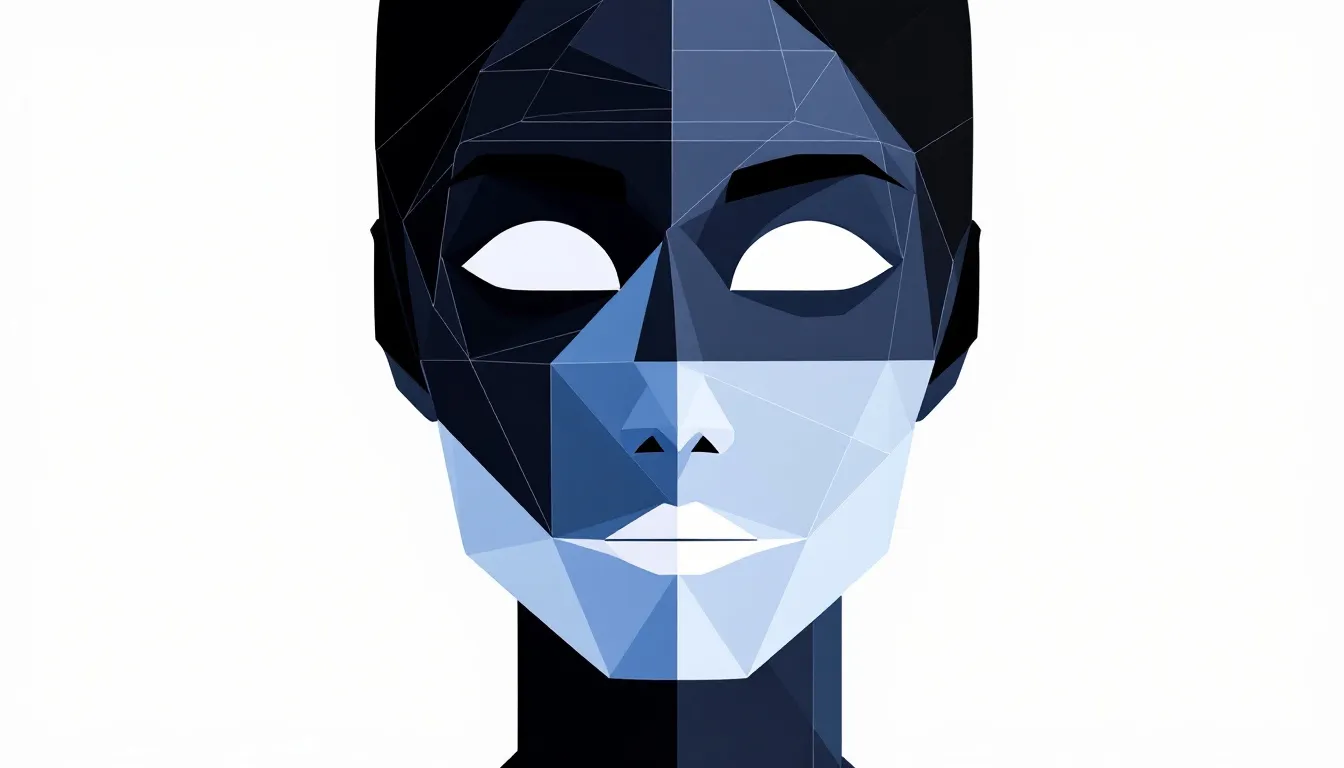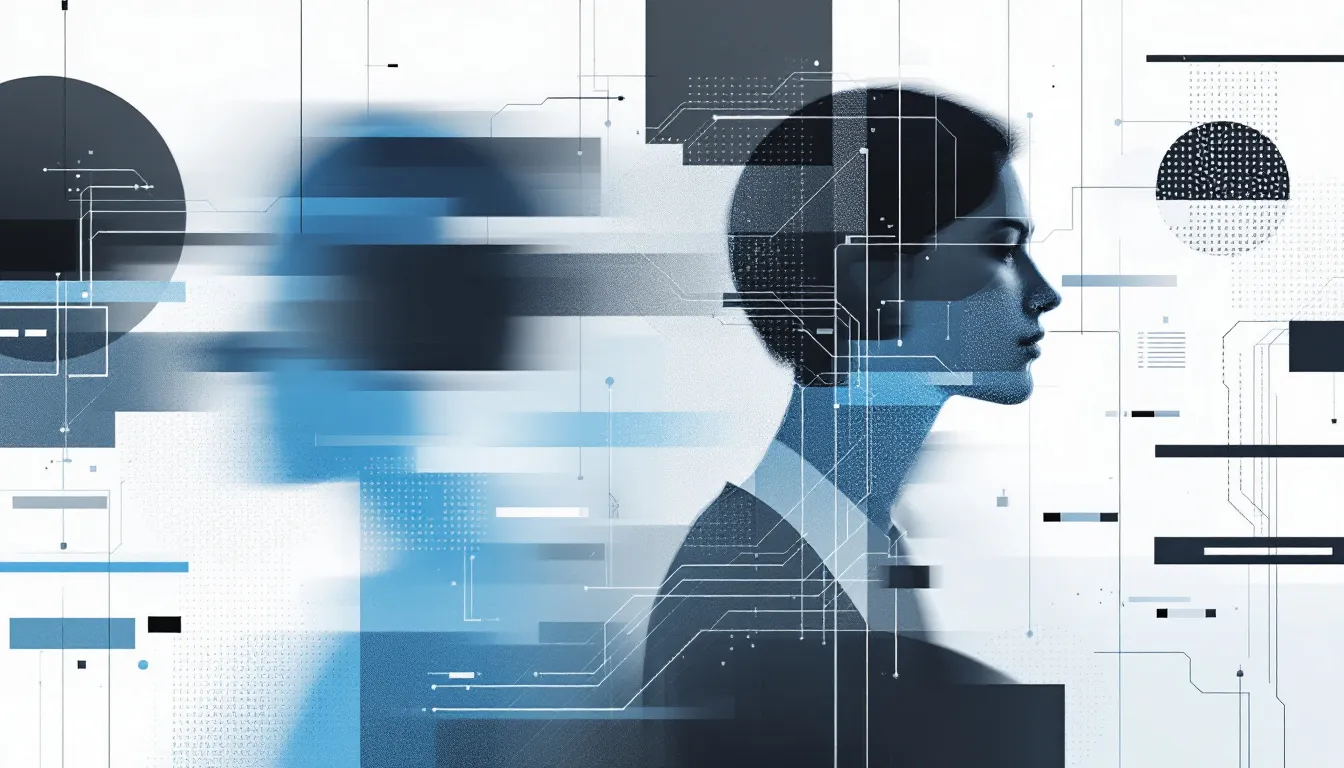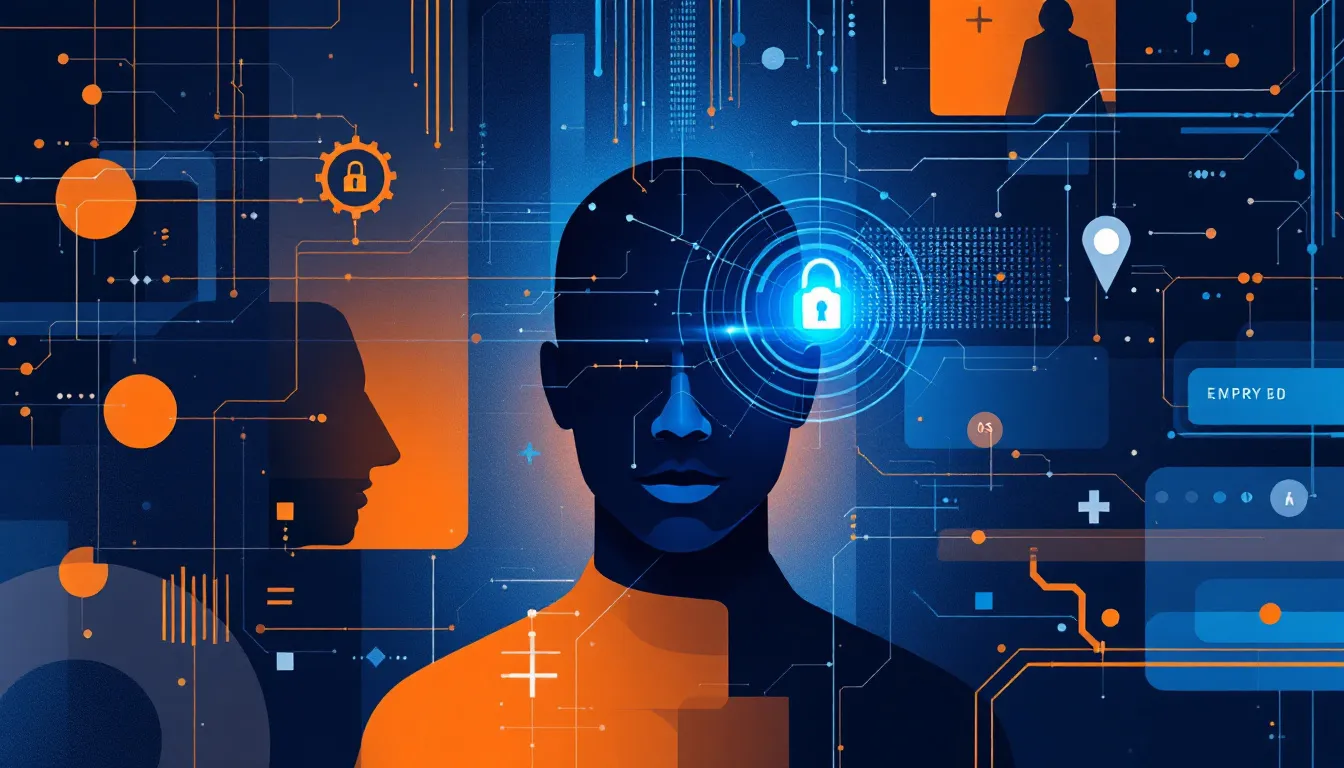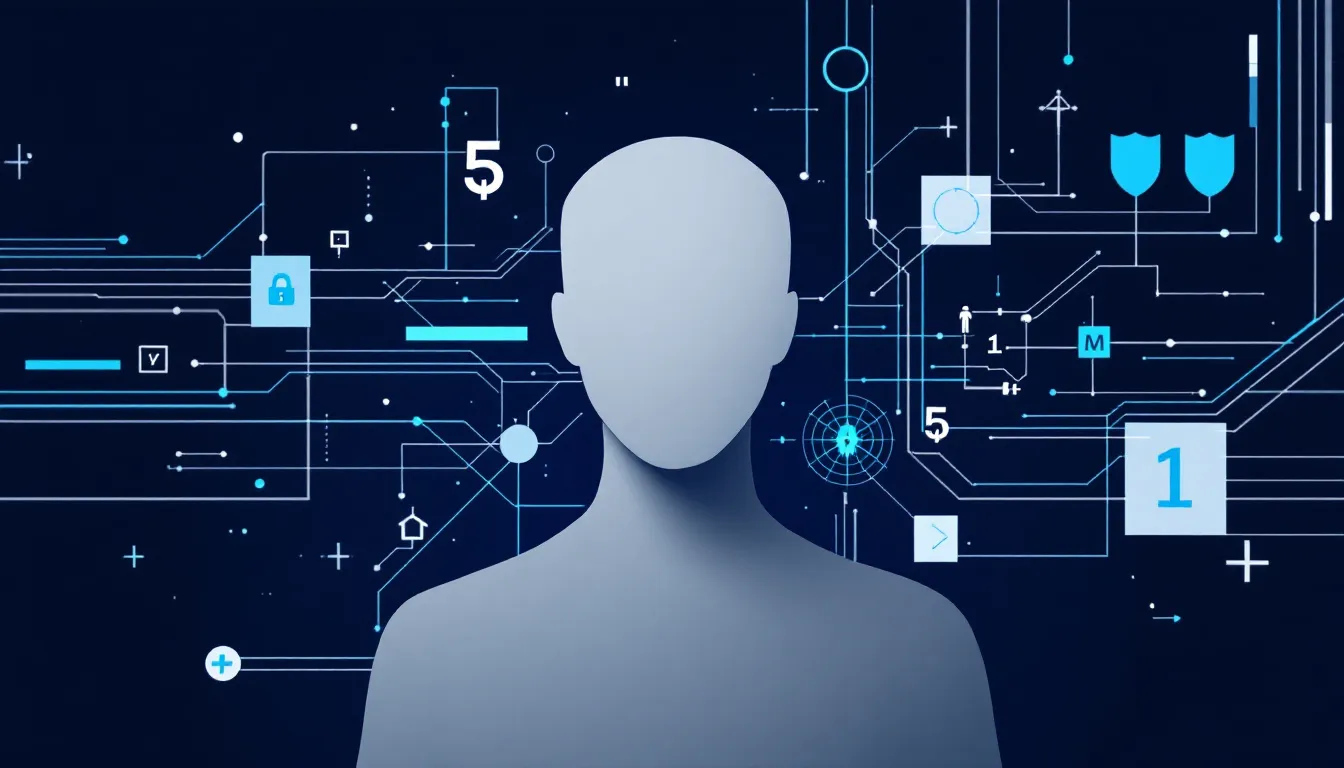Facial recognition often sparks privacy concerns. ‘SafetyCamAI Chrome extension automatically recognizes faces and compares them to a database of 80 million mugshots live and in real time, providing a powerful tool for crime prevention.s’ offer a secure solution by focusing on cropping only the necessary facial features. This approach minimizes data exposure while enhancing security. This article delves into how this technology works and its key benefits.
Key Takeaways
- Privacy-first facial recognition technology, such as SafetyCamAI, emphasizes user trust by ensuring minimal data collection through techniques like face crop only links.
- The implementation of strong encryption, user consent, and transparency in data handling are essential for ethical practices and to foster trust in facial recognition systems.
- Adopting privacy-first strategies not only enhances public acceptance but also helps businesses comply with international data protection laws, reducing legal risks.
Understanding Privacy-First Facial Recognition

The emergence of privacy-first facial recognition technology stems from a fundamental need to balance security and individual privacy. The founder of SafetyCamAI, driven by a personal experience of crime, sought to combat crime while ensuring public safety. This motivation led to the development of a user-friendly and intuitive design aimed at enhancing user experience and building trust.
Privacy plays an essential role in facial recognition technology, impacting how users perceive their safety and security. SafetyCamAI handles users’ facial data with exceptional care, fostering a sense of security and trust in the technology by prioritizing privacy. This approach provides peace of mind for users and their families, creating a safe and secure environment.
Understanding Face Embeddings and Network Architecture
Face embeddings are at the heart of modern facial recognition technology, enabling better accuracy and reliability when identifying individuals. When a face is detected in an image, advanced deep learning algorithms analyze key features—such as the shape of the eyes, nose, mouth, and the overall facial structure. These features are processed through a sophisticated network architecture, which transforms the detected faces into unique digital representations known as embeddings.
Each embedding represents the identity of a person in a way that is both compact and distinctive, allowing the system to match and search for similar faces across millions of images with high accuracy. This process is crucial for enabling seamless integration of facial recognition in various applications, from verifying user identities to searching for matches in large databases. The importance of face embeddings lies in their ability to provide better accuracy and reliability, making them a foundational element in the ongoing advancement of facial recognition technology.
How Face Crop Only Links Work
Face crop only links are a privacy-first approach that focuses on using cropped images of individuals’ faces to minimize unnecessary data collection. This technology employs advanced algorithms to accurately detect and isolate facial features without retaining additional identifiable information, acting as a filter for sensitive data.
Limiting the exposure of full facial images through face crop only links reduces the risk of misuse and ensures more secure handling of personal data. This approach fosters user trust in facial recognition technologies by balancing functionality with strong data protection measures. Once a face is associated with a specific cluster through face crop only links, the association is maintained permanently to ensure consistent identification and data integrity.
The Process of Cropping Faces
The process of cropping faces is the first step in ensuring user privacy. This technique isolates faces from images, allowing the use of only necessary data, significantly enhancing privacy. Users can upload a photo to the platform, where the system automatically crops and processes the relevant facial features for identification. This method is effectively used in personal safety apps, where cropped faces are utilized to enhance safety without compromising privacy. Platforms such as Airbnb and Facebook Marketplace employ cropped faces to verify identities securely, ensuring that users’ full images are not exposed.
In law enforcement, cropped faces play a crucial role in suspect identification while respecting individual privacy. These applications ensure that minimal data is used, reinforcing user trust and compliance with privacy expectations.
Ensuring Data Security
Ensuring data security is paramount in the processed and storage of cropped facial data. To protect against unauthorized access and ensure user confidentiality, cropped facial data is encrypted during processing and storage. This robust encryption helps prevent unauthorized access and safeguards the data. During model training, the system uses the log function in loss calculations to monitor and improve the performance and security of facial recognition algorithms.
Moreover, reducing the amount of personal data collected can significantly lower the risk of cyber threats and data breaches. Restricting data sharing allows businesses to effectively reduce the chances of data breaches and unauthorized usage of sensitive information.
This secure handling of data fosters greater user trust and confidence in the technology, promoting seamless integration.
User Consent and Transparency
User consent and transparency are crucial for fostering trust and ensuring ethical data handling in facial recognition systems. Unauthorized collection of biometric data without user consent raises significant privacy concerns and distrust. Without transparency in data usage, users may feel apprehensive about the technology and its intentions.
Therefore, clear communication and ethical practices are essential to address these concerns and build user confidence.
Benefits of Privacy-First Approach

Prioritizing privacy in facial recognition can enhance public trust and foster user acceptance. Face crop only links significantly reduce the amount of personal data shared during facial recognition processes. This approach addresses ethical issues related to privacy violations and lack of user consent, making the technology more acceptable and trustworthy. Privacy-first face crop only links have had a significant impact on improving user trust and the effectiveness of facial recognition in real-world applications.
Enhanced User Trust
User consent ensures individuals are informed about how their facial data will be used and the privacy measures in place. Adopting a privacy-first approach significantly enhances overall security, building a foundation of trust with users. When companies prioritize user privacy, it fosters a sense of security, leading to greater acceptance and utilization of facial recognition technologies.
Strong privacy measures can significantly boost users’ faith in the technology, leading to increased usage. Users are more likely to engage with facial recognition technology that transparently communicates data handling practices, fostering a more positive public perception. This transparency leads to higher user confidence as individuals feel their data is handled securely.
Minimizing Data Misuse
Implementing private privacy-first strategies can prevent unauthorized data access and misuse. Enabling minimizing data exposure significantly reduces the risks of data breaches, helping to establish greater user trust and coverage.
Inconsistent accuracy rates in facial recognition can lead to severe implications for individuals wrongfully identified, making it crucial to ensure ethical data handling and fairness from the beginning.
Compliance with Regulations
Implementing privacy-first strategies can help organizations meet international data protection laws, reducing legal liabilities. A privacy-first approach ensures alignment with international data protection laws, helping organizations avoid legal penalties.
New regulations are anticipated to promote privacy-first facial recognition technologies, which will adapt to varying international privacy regulations.
Fairness and Bias in Facial Recognition
Ensuring fairness and minimizing bias are significant challenges in the development and deployment of facial recognition technology. Bias in facial recognition systems can lead to inaccurate results, especially for individuals from underrepresented groups, which may pose risks to both safety and trust. To protect against these issues, it is essential to create systems using a combination of diverse and representative data, careful data curation, and advanced techniques like data augmentation and transfer learning.
Transparency is equally important—users should be informed about how the technology works and how their data is being used. By prioritizing fairness and transparency, developers can create facial recognition solutions that are more accurate and equitable. For example, a public safety platform should be designed to protect the identity and safety of all individuals, regardless of background, ensuring that the technology leads to positive outcomes for everyone. This commitment to fairness not only builds trust but also sets a standard for ethical AI in the world of facial recognition.
Training and Optimizing the Model
The process of training and optimizing a facial recognition model begins with the first step: collecting a large and diverse set of images. These images are carefully processed to detect faces, align them, and extract significant features that are essential for accurate recognition. The model is then trained using a combination of supervised and unsupervised learning techniques, such as convolutional neural networks (CNNs) and autoencoders, to learn how to distinguish between different identities.
Optimization algorithms like stochastic gradient descent (SGD) and Adam are used to enhance the model’s performance, ensuring it can accurately verify or identify faces in real-world scenarios. Developers often employ techniques such as transfer learning and data augmentation to further refine the model, adapting it to new data and improving its robustness. By following this process, developers can create facial recognition models that deliver high performance and reliability, enabling a wide range of applications that benefit from accurate and efficient face matching.
Real-World Applications of Face Crop Only Links

The adoption of a privacy-first approach in facial recognition enhances user engagement by addressing privacy concerns. SafetyCamAI, for example, has emerged as a significant resource in public safety, allowing citizens to access tools that were previously exclusive to law enforcement.
This growing recognized is attributed to the real-world effectiveness of the developed technology solution in crime prevention. Face crop only links can utilize metadata such as location to organize and link photo assets, improving the accuracy of clustering and identification in real-world scenarios.
Personal Safety Apps
The SafetyCamAI app proactively identifies potential threats for families by:
- Allowing users to upload images of strangers.
- Utilizing AI algorithms in the face cropping process to automatically isolate facial features from images.
- Discarding irrelevant background data during the face cropping process.
The app also promotes awareness among users about the importance of diverse and representative datasets to ensure fairness and accuracy in threat identification.
Users report increased confidence in their safety due to the benefit of the app in real-life scenarios, enhancing personal and community security.
Secure Online Transactions
Face crop only links help verify the identities of users on platforms like Airbnb and Facebook Marketplace, enhancing the safety of transactions. These platforms utilize face crop only links to securely verify user identities during transactions, ensuring safe and trustworthy interactions.
Identity verification is crucial for ensuring the safety of online transactions, leading to safer online interactions and helping to identify user trust.
Law Enforcement Use Cases
Facial recognition technology aids law enforcement in several ways:
- Quickly identifying suspects from public images by matching them with known databases.
- Using SafetyCamAI to validate identities while ensuring privacy and enhancing operational efficiency.
- Analyzing facial features from crime scene images against mugshot records to trace and apprehend suspects more effectively.
A notable example includes the quick identification of a suspect involved in a violent bus attack, allowing for immediate law enforcement response. In New York, facial recognition was crucial in locating an individual who had planted explosive materials at a subway station, showcasing rapid intervention capabilities in that moment.
However, it is essential to maintain high accuracy standards to prevent misidentifications and their severe consequences, ensuring better accuracy and highlighting how matter represents the similarity and difference.
Maintaining an account of diverse and balanced data is crucial for ensuring fairness and accuracy in law enforcement facial recognition systems.
Success Stories and Case Studies

SafetyCamAI plays a crucial role in resolving criminal cases and enhancing public safety through effective facial recognition. The platform has gained growing recognition as a powerful tool in crime prevention, solving notable high-profile cases.
Applications like Reverse Mugshots.com enhance public safety by actively identifying and tracking criminals through facial recognition, with user-friendly interfaces that streamline the processes of searching for and verifying criminal identities.
High-Profile Cases Solved
A notable case involved a suspect linked to a series of burglaries who was identified and arrested through the reverse mugshots app using face crop only links. This successful resolution demonstrated the effectiveness of privacy-first facial recognition technology as a feature in aiding law enforcement while respecting individual privacy, which helped to match the suspect to the crimes.
This case has helped enhance public trust in inspired facial recognition technologies when employed ethically and securely.
Positive User Feedback
Success stories have demonstrated the practical utility and effectiveness of face crop only links. Users have reported high levels of satisfaction with the accuracy and reliability of the technology, further inspiring confidence in its adoption.
Ethical Considerations and Challenges
Facial recognition technology poses significant risks to person privacy, which must be addressed responsibly. Manage these risks effectively is crucial. It helps to safeguard individual privacy and uphold public trust.
Ethical concerns are critical in understanding the impact of facial recognition technology on privacy rights, emphasizing the need for ongoing discussions to foster innovation without compromising privacy.
Balancing Privacy and Security
The ethical use of facial recognition relies on balancing individual privacy rights with safety and security needs. The motivation for creating a tool for public safety arose from the founder’s experience of being robbed at gunpoint, highlighting the importance of balancing safety and privacy.
Accuracy and Reliability
Accurate identification is crucial in facial recognition technology to prevent wrongful accusations and ensure justice. Misidentification can have serious repercussions for individuals. It may lead to significant negative effects in their lives. The app utilizes advanced AI algorithms for improved accuracy in identifying suspects. Maintaining high accuracy standards helps the technology prevent misidentifications, ensuring reliable performance. The algorithm is designed to expect consistency in a person’s appearance within a given moment or set of images, which helps improve clustering accuracy and manage variability.
AI advancements will likely lead to more accurate and reliable facial recognition solutions. These advancements will enhance real-time capabilities, allowing for better monitoring and identification processes. This focus on accuracy and reliability underscores the importance of ethical AI in facial recognition technology.
Best Practices and Guidelines
Developing and deploying facial recognition technology responsibly requires adherence to best practices and guidelines that emphasize fairness, transparency, and user consent. One of the most important aspects is ensuring that users provide informed consent before their personal data is collected or processed. This involves using clear, accessible language and providing transparent information about how the technology works and how data will be used.
Data protection and security are also paramount. Developers should implement strong encryption, access controls, and other security measures to safeguard personal data throughout its lifecycle. By prioritizing these best practices, developers can create facial recognition systems that not only deliver high accuracy and reliability but also respect users’ privacy and rights. For instance, in commercial applications, the technology should offer a seamless and intuitive experience while ensuring that users’ personal information is protected and handled with the utmost care. This approach builds trust and sets a standard for ethical and responsible use of facial recognition technology.
Future Developments in Privacy-First Facial Recognition

Innovations are expected to significantly enhance user privacy and security through advanced algorithms. Upcoming technologies are anticipated to focus on improving user privacy and enhancing AI functionalities.
Significant advancements in AI and connectivity are on the horizon, promising to improve user interfaces and integrate advanced AI capabilities, thus enhancing the functionalities of software applications like SafetyCamAI through automation. Future advancements will likely incorporate random transformations and random initialization strategies during model training to further enhance the robustness and generalization of facial recognition systems.
Advanced AI Integration
Plans for SafetyCamAI.com include enhancing interfaces, incorporating advanced AI, and expanding internationally. The Reverse Mugshots app leverages artificial intelligence to create synergy with facial recognition, improving functionality and user experience.
Integrating advanced AI into facial recognition systems is crucial for enhancing their performance and adaptability. These advancements are expected to significantly boost the overall performance and reliability of facial recognition technologies.
Global Expansion Plans
Companies seek to expand their market presence. Their goal is to reach international audiences. There is a strategic focus on entering new international markets to enhance facial recognition offerings. Privacy-first facial recognition solutions are particularly targeting emerging markets, driven by increasing demand for secure biometric verification.
Additionally, there is a specific strategic focus on entering Asian markets, aiming to meet the growing demand for reliable and secure biometric verification solutions.
Summary
Privacy-first facial recognition, exemplified by face crop only links, represents a significant advancement in balancing security and privacy. This approach minimizes unnecessary data collection, ensuring user trust and compliance with international data protection laws. From personal safety apps to secure online transactions and law enforcement, the applications of this technology are vast and impactful.
As we look to the future, the integration of advanced AI and global expansion plans promise to enhance the functionality and reach of privacy-first facial recognition technologies. These developments will continue to foster innovation while maintaining ethical standards and protecting individual privacy, paving the way for a secure and privacy-respecting future.
Frequently Asked Questions
What are face crop only links?
Face crop only links are a privacy-centric method that utilizes cropped facial images to limit data collection and mitigate misuse risks. This approach prioritizes individual privacy while still allowing for necessary visual identification.
How does face cropping enhance privacy?
Face cropping enhances privacy by isolating and using only essential facial features, significantly reducing the exposure of full facial images. This approach minimizes the risk of unauthorized identification and maintains individual confidentiality.
What measures are taken to ensure data security in face crop only links?
To ensure data security in face crop only links, cropped facial data is encrypted during processing and storage, and data sharing is limited to mitigate the risk of breaches. Such measures are crucial for safeguarding sensitive information.
How do face crop only links benefit law enforcement?
Face crop only links benefit law enforcement by enabling rapid identification of suspects through comparison with existing databases, thus improving operational efficiency while maintaining privacy.
What future developments are expected in privacy-first facial recognition?
Future developments in privacy-first facial recognition are expected to focus on integrating advanced AI for enhanced accuracy and reliability, alongside plans for global expansion to address the increasing demand for secure biometric verification.
Leave a Reply